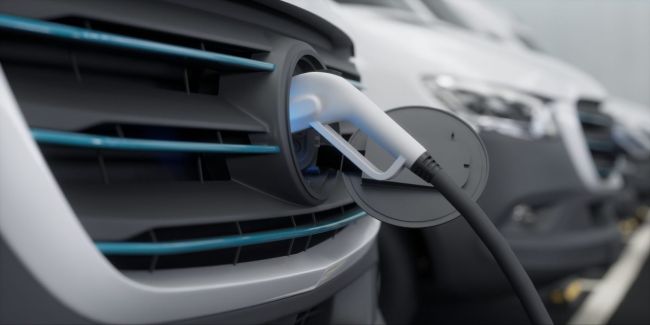
Best Practices for Developing an In-House Maintenance Policy for EVs
Although some utilities outsource electric vehicle maintenance, those fleet managers exploring the idea of handling it in-house can follow best practices and industry standards to create a comprehensive maintenance policy tailored to the unique needs of EVs.
The first step in developing such a policy is to conduct a thorough assessment of the fleet’s specific requirements. According to the Electric Power Research Institute (www.epri.com), utility fleets should analyze factors including make and model, expected usage, driving conditions and available charging infrastructure.
Once their needs have been assessed, utility fleets can establish a maintenance schedule based on manufacturer recommendations and industry best practices. The maintenance schedule should include regular inspections, tire rotations, brake checks and fluid top-ups to ensure the optimal performance and safety of the EV fleet. Following the manufacturer’s guidelines for maintenance intervals and procedures is critical to maintaining the warranty and assuring vehicle longevity.
Training Technicians
Training maintenance staff on the unique characteristics of EVs is necessary to successfully implement an in-house maintenance program. Staff must become familiar with battery management, regenerative braking systems and charging protocols specific to EVs. Ongoing training should be provided to keep maintenance staff up to date with the latest EV technologies and maintenance practices.
However, according to Chris Foster, director of fleet management services for Holman (www.holman.com), technician training is perhaps the biggest challenge currently facing those who operate in-house EV repair facilities.

“Many electric vehicles are still relatively new to the market, and most technicians have received little to no training on these complex and rather dangerous systems,” he said. “Holman typically advises our clients to coordinate potential training with their OEM partners at the time of ordering to familiarize technicians with inbound models. There are some independent training programs available, but since the OEM technology is proprietary, this third-party training often lags behind.”
Utility fleets should establish protocols for handling unexpected maintenance issues or breakdowns with EVs. Maintenance staff must be trained to safely and effectively address these issues, and there should be a plan in place for coordinating with manufacturers or third-party service providers when needed. Having a contingency plan for unexpected maintenance issues will help minimize downtime and ensure the continued operation of the EV fleet.
Preparing the Facility
To maintain EVs effectively, utility fleets will want to invest in the appropriate specialized tools and equipment, such as diagnostic software, battery testers and charging station equipment. These tools will help maintenance staff perform their jobs more effectively and efficiently.
When incorporating EVs into their fleet and adapting their in-house garages, fleet operators must prioritize safety above all else.
“Working on EVs can pose a greater hazard for technicians who are not accustomed to them,” Foster said. “Without proper training and safety equipment, the high-voltage powertrain of an electric vehicle can present significant risks. Direct contact with the system by a technician or other employee can lead to serious injuries.”
He advised fleet operators to ensure their facilities have adequate room to work on EVs. “Most OEMs recommend a 6-foot to 8-foot ‘safe zone’ perimeter around the vehicle. This is intended to keep others clear of the area and avoid an inadvertent static charge near the high-voltage systems. Additionally, the facility will need specialized tools and personal protective equipment to safely handle high-voltage components.”
Getting a facility ready for EVs typically involves numerous distinct factors that affect and are shaped by various areas of the business beyond just fleet, Foster noted. Feedback is needed from a wide range of stakeholders, including fleet, operations, facilities, safety/risk and even OSHA. Gathering that feedback will help to ensure that the facility is planned with a strong focus on safety.
Handling High-Voltage Components
In addition to establishing a safety perimeter of 6 to 8 feet and organizing appropriate technician training, fleet operators will want to ensure that the necessary personal protective equipment is easily accessible, Foster advised.
Technicians should have rubber aprons, insulating boots, insulating rubber gloves and protective eyewear, among other essential gear. Moreover, all standard tools – such as wrenches, screwdrivers and pliers – must be insulating to further minimize the risk of accidental electrocution.
The facility will also require a nonconductive object at least 5 feet in length designed to safely dislodge someone from a high-voltage system in the case of an emergency, as well as fire extinguishers and protective barriers to establish a secure safety perimeter, Foster said.
Outsource as Needed
With proper training and safety precautions, many fleet operators can conduct basic preventive maintenance and other non-powertrain EV repairs at their in-house garages.
But most fleet operators are likely best served by leveraging external maintenance partners (i.e., OEM facilities) to conduct any repairs that involve the vehicle’s high-voltage system, Foster said. “In most scenarios, it is more efficient – both in terms of cost and time – to have your in-house technicians prioritize PM services for your EV units and other repairs for your ICE vehicles while allowing outside resources to handle specialized EV maintenance.”
About the Author: Grace Suizo has been covering the automotive fleet industry since 2007. She spent six years as an editor for five fleet publications and has written more than 100 articles geared toward both commercial and public sector fleets.

